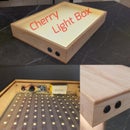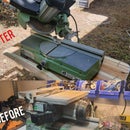Introduction: How to Understand Your Loads and Carbon Fiber
Hi All
Last week we completed our loads calculation for the skateboard frame:
https://www.instructables.com/id/How-to-Calculate-...
Today we are going to see what the numbers mean, and talk briefly about what comes next.
Please visit us at: http://dosimplecarbon.com, and the current post:
http://dosimplecarbon.com/understanding-loads-and-...
Let's begin:
Step 1: Sanity Check - Boundary Conditions
After any calculation it is always a good idea to check your results. This is especially important for loads calculation because the numbers which you obtain here will drive your design.
Let’s look again at the obtained results, for brevity we will use only one graph for the longer frame, L=86cm.
What are the results at the edges of the frame, the wheels? We can see that the shear force at both sides is equal to the reactions we established earlier, 60 kg, see here: http://dosimplecarbon.com/calculating-loads/
This is important, the values at the edges need to match, in our case these are the forces only, remember the simple support. Just one comment, note the sign of the shear force at the wheels, it is positive 60 kg on the left side and negative -60 kg on the right side. This happens because of the sign convention of the method we calculated those, little odd but correct. If you are interested in particular details, just contact me and I will add a more technical explanation.
Now, what happens with the bending moment at the wheels? It is zero. Simple support cannot hold moment, so again these results make sense.
Step 2: Sanity Check - General Values
Now let’s look at the general shape of the curves.
In Case 1 we have one force in the middle of the frame, hence only one point which can change the slope or variate the curves. In Case 2 these are two legs at two points which will act as the slope changers. We can see this behavior above. Finally, let’s calculate the approximate values at the peaks. For Case 1, if we look from the middle of the longer frame, we see the 60 kg reaction at the distance of ~43 cm, this results in a moment of 25.8 kg*m. Using the exact length will get us the value in the picture. In the same way we can get the 17.3 kg*m for Case 2. Note for Case 2 the moment is constant between two legs.
The results make sense and we can move on. The table summarizes the peak values.
Step 3: What Does It Mean?
What can we conclude from the table? For example, if we consider the shorter board, then we have to worry about the 20.6 kg*m moment obtained in the middle, and we would have to choose the materials and the structure in a way that will support this load (Shear forces are less significant, we will see this later).
It is easy to understand that supporting larger loads requires bigger and heavier structure. Consequently, if we aim for the lightest frame possible, we will design for this load only and not for higher values. Simply because higher values do not exist, under our assumptions of course… We can go even further and reduce the frame size/thickness towards the wheels, where the moments are smaller. Then, we should not forget about the practical/fiscal aspects of any chosen solution… and we are done. More or less…:)
Step 4: Choosing Carbon Fiber
So, how do we choose the materials and the design of the structure?
We need an idea which we can build on and which will be a baseline for further calculations. The idea which we will explore here is to use carbon fiber tubes to construct our structure. Why carbon fiber? Actually, it is carbon-epoxy, is a composite material which is very light and strong. Why carbon tubes? They are available in various sizes and are an existing product, which means that these are relatively cheap. They are very popular in RC modelling, various drones, and aerospace. I think it’s time to adopt them to personal transportation What we need to do is find the ones that fit our needs, design the additional parts, manufacture, test, and integrate the required components on top.
Carbon fiber products start as a woven fabric of carbon tows. Tows are bundles of tiny carbon filaments, they are usually counted in thousands; 1k, 3k, 6k, 12k. The most popular thread count is 3k.
Producing parts from carbon fabric requires the use of polymer matrix, which is usually epoxy. Hence the term – composite material – it consists of more than one part, carbon fibers and epoxy in this case. Most of the strength comes from the fibers, but epoxy will shape them into a product. See the following links for more information:
https://en.wikipedia.org/wiki/Carbon_fibers
https://en.wikipedia.org/wiki/Carbon_fiber_reinfor...
The process of making useful parts from carbon fabrics requires substantial investment in materials and dedicated equipment like vacuum pump. Also, there are a lot of techniques to learn, and it’s messy… Several years ago I made my share of glider wings and RC gliders, while I’m by no means an expert, I made several nice products.
We will go a different way. Rather then laying a whole new frame out of carbon fiber, we are going to use carbon tubes which are already made and integrate them to satisfy our requirements.
You can see the basic design, this should be regarded as version 0.
The end pieces will be designed nicer and will have finer transitions and interface to the trucks. The interface between these pieces and carbon tubes will be validated and tested – a lot of interesting and fulfilling work ahead.
Enjoy,
Dani













